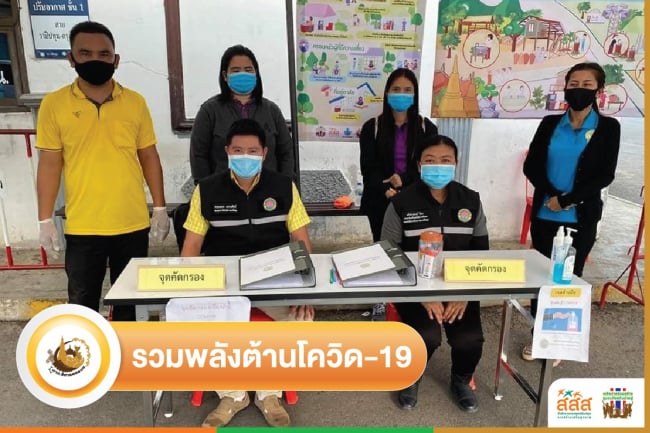
Thailand’s obesity issue among children and control measure on health-risk food products

by Dr. Pairoj Saonuam, MD.
Assistant Chief Executive Officer, Thai Health Promotion Foundation (ThaiHealth)
Acting Director of Promoting Healthy Lifestyle Section
Over the past two decades, the situation of child obesity in Thailand has become more severe. A number of children suffering obesity also tends to increase in the future. Following the fifth survey report on children’s medical check up conducted in 2014 and health surveillance data from Public Health Ministry’s Health Data Center (HDC) as of 8 March 2022, children aged 1-5 years having symptoms that could lead to obesity and those suffering from obesity increased from 5.8% – 11.4%. Meanwhile children aged 6-14 years also increased from 5.8% to 13.9%. In addition, teenager having obesity symptoms were at 13.8%.
Nevertheless, if we do nothing, or depend on our same old working mechanism, the impact of obesity on Thai children would be doubled in the next ten years.
To make it clear, a project on policy research and development study at Mahidol University’s Institute for Population and Social Research studied obesity in Thai children and predicted the issue would increase from 27% in 2020 to 35% in 2030 and 67.5% as the worst case scenario. Without any control measure, a number of Thai children suffering from obesity symptoms would increase from 3.3 million to 3.5 million and up to 7.4 million as the worst case scenario.
The World Obesity Federation (WOF) estimated that more than 30% of Thai population aged under 20 years would suffer from overweight and obesity. The economic burden could be as many as 12.142 billion baht, especially the cost on health care and the loss of premature death.
Although Thailand has continuously shown effort to solve the issue of obesity in children by advocating health promotion and environment that supports good health. However, a lack of “protecting children from marketing of food and beverages having health impact” is evident. Marketing strategy of these consumer products is the key factor affecting purchasing decision and consumption among children.
Nearly 90% of Thai children exposed to four consecutive commercials of food and beverages having high level of sugar, fat and sodium ingredients within one hour will arouse their desire to try the product. Over three-fourth or 76.8% of Thai children do not even see the warning message in commercials of food and beverages having high sugar, fat and sodium ingredients.
Hence, advertisement is regarded as one of the key factors influencing consumption behavior among children, leading to health problems for example sweet tooth and eventually obesity. These health problems affect physical health including lung and heart failure and unusual metabolism. Children are also affected from anxiety, and Attention Deficit Hyperactivity Disorder. Obesity is also a risk factor leading to non-communicable diseases such as diabetes, high cholesterol, high blood pressure, and heart diseases.
Certainly, the influence of advertisement is not the only factor to be blamed, but also the way parents raise our children, eating and living habits of each family which causes our children’s consumption behaviour. If we let children spend more hours sitting in front of screens, haves edentary behavior, no physical activity, and eat snacks all day, eventually they will have obesity and health problems.
Therefore, home, school, communities and society must have rules and regulations. My family, for example, has both a son and a daughter. Young children aged below two years should not be exposed to mobile phones, tablets or televisions. Children in primary school years is the golden period that we can teach, set house rules for them, for example, limited snack consumption, limited amount of snack intake each time, no soda at home, keeping fruits in fridge, going to bed early, etc. Media consumption should also be taken into account. So many media platforms which children can access. Many commercials exploit children by using cartoon character to catch attention. Those advertisements usually tell only half truth and persuade audience to crave for products.
Governmental sector can support parents, families and school by making sure that social rules, and a measure to control health-risk products are available, and working together to identify details of the advertisement, to provide thorough information together with suggestion on health-risk food consumption. Business sector can work together to adjust their food formula, and business to be more social-oriented rather than profit-oriented.
In the past, ThaiHealth via Healthy Diet Plan, seeks to systematically solve obesity problems by integrating measures, supporting knowledge management, research and innovation, raising awareness by working with network stakeholders for example the Nutrition Association of Thailand, Sweet Enough Network, Dek Thai Kam Sai Network, Low Salt Thai Network, Consumer Protection Network, Media Network for Children and Youth etc. to drive measures aimed at protecting children and youth health from marketing strategy of health-risk food products having high sugar, fat and sodium level. These measures needs cooperation from all stakeholders and public to drive sustainable good health among Thai children and youth.
Let’s work together to drive a measure to control health-risk food products for good health of all Thai kids.

rn





